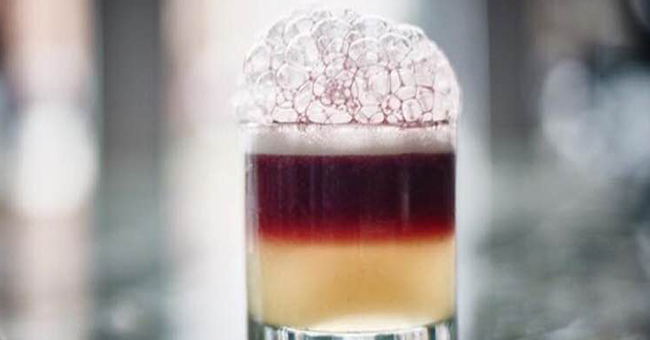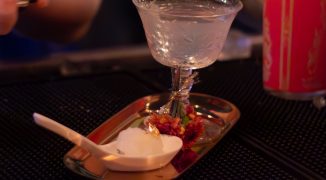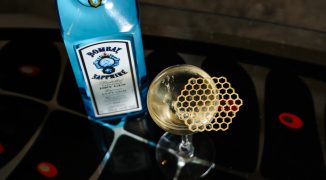A bold, flavor-packed food menu isn’t always a good indicator of a restaurant’s alcoholic offerings. In fact, ethnic restaurants can sometimes have a notoriously bland drinks menu—or even a BYOB policy. But some mixologists across the country are challenging the notion that food and drinks menus can’t be equally strong and solid. Here, a few of them tell us how the strike the right balance.
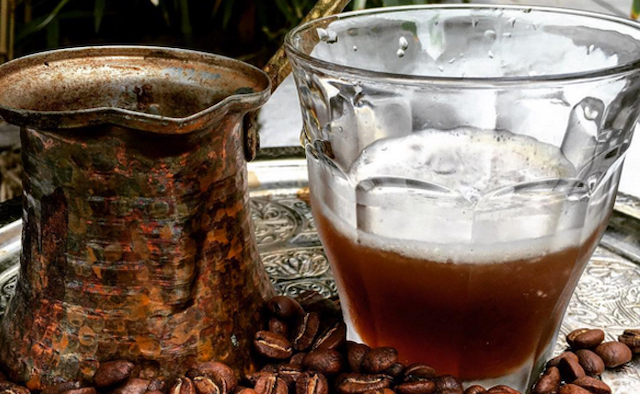 Green Zone’s boozy take on Turkish coffee combines coffee with pisco. Photo: Chris Hassaan Francke/Green Zone DC.
Green Zone’s boozy take on Turkish coffee combines coffee with pisco. Photo: Chris Hassaan Francke/Green Zone DC.
Chris Hassaan Francke, Green Zone
Half-Iraqi and half-American mixologist (and World Bank consultant by day) Chris Hassaan Francke grew up with a love for entertaining people. “I guess you can call it the Arab hospitality gene — as soon as someone comes over, I’m offering them tea, or coffee, or whatever else I have,” he says. In 2013, he decided to pair his passions for mixology and hospitality, opening a speakeasy in his Washington, D.C. apartment and using his Middle Eastern background as inspiration for his cocktail creations. The Turc Noir, for example, is his take on the Black Russian, except Francke swaps vodka for pisco and Kahlua for Turkish coffee liqueur. One of his most popular drinks, the F**k ISIS Punch, combines two kinds of rum — Francke’s favorite spirit — with Vimto, a deep red, fruit-flavored soft drink from England, with homemade bitters that he makes from a number of Arabic spices including cardamom, allspice, clove and saffron.
Over the last three years, Francke’s speakeasy has grown into a traveling pop-up, called the Green Zone, which has partnered with a number of local bars and restaurants, including EatsPlace, which brought in Middle Eastern joint Kafta Burgers’ food to pair with his cocktails. “There were many of the same flavors in the bitters and food,” Francke says of the burgers, which were made with parsley-infused beef, among other ingredients. “You would think the spices might be competing, but the acidity of the drinks cut into the thickness of the burgers. The flavors actually layered quite nicely.”
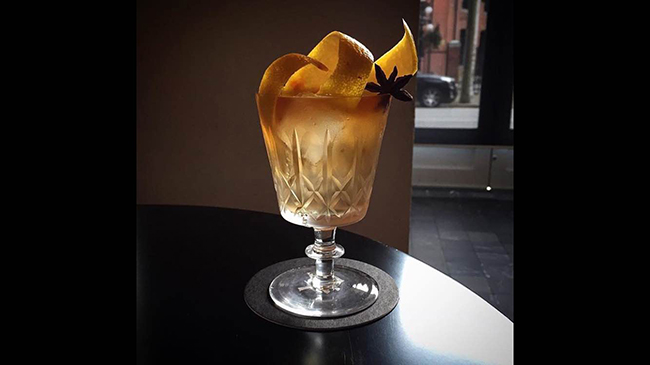 The Tsui Hang #2, an alcoholic version of cold tea, is crafted with salted plum, goji berry, and star anise-infused rye, and is designed to cut through the heavy flavors in dishes such as Bambudda’s housemade pork dumplings. Photo by Tarquin Melnyk.
The Tsui Hang #2, an alcoholic version of cold tea, is crafted with salted plum, goji berry, and star anise-infused rye, and is designed to cut through the heavy flavors in dishes such as Bambudda’s housemade pork dumplings. Photo by Tarquin Melnyk.
Tarquin Melnyk, Bambudda
“We didn’t seek to just play nice — there are a lot of slightly aggressive flavors in our drinks menu,” says Tarquin Melnyk, bar manager at Vancouver’s Bambudda restaurant. The eatery, which serves Hong Kong-style Chinese, has a drink menu where cocktails have almost as complex a composition as the plates on its food menu. For example, the Dong Fang Hong, which takes its name from China’s first diesel train, features mezcal, lap sang kombucha, tequila, epazote Riesling syrup, smokey pear bitters, egg white, and lemon oil stencil. “It’s an exploration of smoke,” Melnyk says, “and it pairs nicely with a dish like the black bean tofu with vegetables, which has sultry notes as well.” Meanwhile, the Tsui Hang #2, an alcoholic version of cold tea, is crafted with salted plum, goji berry, and star anise-infused rye, and is designed to cut through the heavy flavors in dishes such as the housemade pork dumplings. “We really wanted to focus on the plummy richness of the salty plum and tart cherry peppercorn to find balance between the salt of the food and the acidity of the drink,” Melnyk says. “When you eat it with the dumplings, we want it to taste as if the drink and food were made together.”
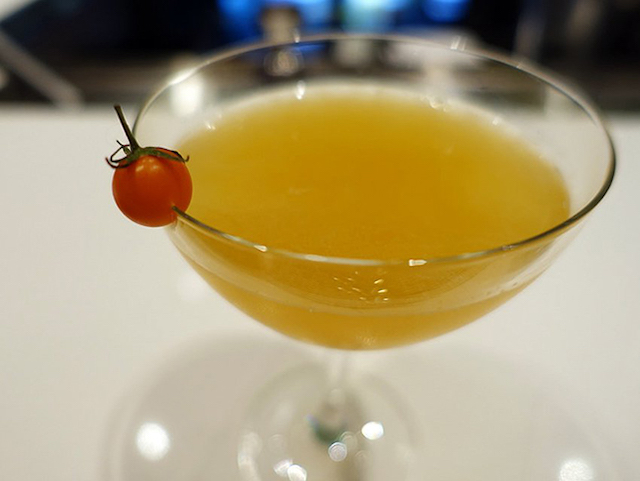 The Vegetable Walla features vodka, dry vermouth, ancho reyes chile liqueur, as well as tomato and red onion, two ingredients that are commonly used at the Los Angeles Indian restaurant Sambar. These parallels make the cocktails a sturdy pairing for spicy and pungent dishes. Photo by Caroline Pardilla.
The Vegetable Walla features vodka, dry vermouth, ancho reyes chile liqueur, as well as tomato and red onion, two ingredients that are commonly used at the Los Angeles Indian restaurant Sambar. These parallels make the cocktails a sturdy pairing for spicy and pungent dishes. Photo by Caroline Pardilla.
Clare Ward, Sambar
Kentucky native Clare Ward knew she was in for a challenge when she was tasked to create the cocktail menu at Los Angeles Indian restaurant Sambar. “Everything in Indian food has a good amount of spice — there’s not a lot of subtle flavors, and it’s a thin line to walk where your cocktails stand up to the food, but don’t compete with it,” she says. To avoid overpowering the food menu, which includes plates like masala-braised short ribs and the sevpuri chaat (teff puris with mango, avocado, red onion, and pomegranate-mint chutney), Ward passed on liquors such as mezcal, which she considered too smoky for Indian cuisine. Instead, she plays to the spices found in Sambar’s food menu. The Vegetable Walla, for example, features vodka, dry vermouth, Ancho Reyes chile liqueur, as well as tomato and red onion, two ingredients that are commonly used at the restaurant. Another favorite, an Indian spin on the Gin and Tonic, uses turmeric-infused gin, as well as Fever Tree Indian tonic, for an extra refreshing flavor.


